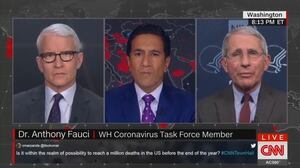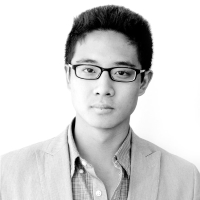Top officials on President Donald Trump’s coronavirus task force told governors on Monday they were worried about a spike in infections due to the mass protests against racial injustice taking place across the country.
Speaking via conference call, a recording of which The Daily Beast obtained, Deborah Birx, Trump’s coronavirus response coordinator, relayed fears that the yelling by protesters could potentially negate the health benefits of wearing a mask, and that the destruction of testing sites at those protests would set back efforts to contain the virus’ spread. Birx said 70 such sites had been destroyed, which had already resulted in an appreciable drop in testing rates there. She advised governors to “scramble now to make sure there is testing available in urban areas.”
Vice President Mike Pence, who hosted the call, bluntly conceded that protest-related infection spikes were “an issue our team is following and there is a concern.”
Those remarks echoed similar fears raised by coronavirus task force officials, including CDC Director Robert Redfield, during a telephone call with governors last week, a recording of which The Daily Beast also obtained. In that June 3 call, Birx said while she, like Pence, did not see a big surge in coronavirus cases over Memorial Day weekend, she was concerned that large metro areas—ones already struggling to stabilize case numbers—would experience an uptick in cases because of the protests.
“This could result in a fight over the next two weeks,” she said. On the call five days later, Birx added her fears that as the protests had grown more peaceful, more people from higher-risk populations began attending them. For good measure, she told governors to also make sure that law enforcement officials who worked the protests without masks get tested as well, calling it “absolutely critical.”
The governor calls come as the trajectory of coronavirus infections in the United States is going in several directions. While case numbers and hospitalizations have declined nationally, states such as Arizona, North Carolina, California, and Utah have seen upticks that do not appear to be related to the protests. On the June 3 call, Birx relayed that her team had tracked outbreaks in more than eight states over the last week, 38 percent of which were due to community spread, with 55 percent in places such as nursing homes, long-term-care facilities, prisons, and food-processing plants.
Birx’s presentations—and her fears that real-world events could exacerbate the COVID-19 outbreak—underscore the deep concerns that health officials still harbor about a possible second wave of the pandemic even as a growing portion of the country, including the president himself, seems inclined to move on.
“The president seems to think the hardest part [of the pandemic] is over,” said one administration official who has repeatedly spoken to Trump about the coronavirus.
In a speech in front of biotech executives Tuesday, Anthony Fauci, director of the National Institute of Allergy and Infectious Disease, told the audience that the coronavirus “isn’t over yet,” saying there was still much to be understood about how the virus spreads and how to treat it.
Fauci was not on either of the two calls obtained by The Daily Beast but a spokesperson from his team said he is still an official member of the task force. Fauci told CNN last week that he had not spoken to Trump “in weeks.”
During the calls, Birx noted that while all states had dramatically increased testing, three states—California, Arizona, and North Carolina—had seen positive test results rise at the same time; an ominous sign about the virus’ trajectory. “That makes us quite concerned,” Birx said. Pointing specifically to increased cases in Phoenix, Charlotte, and in Salt Lake City, she said it was her belief that “there is active community spread in California, North Carolina, Utah, and Arizona.”
Birx noted, in particular, that her team had seen data that showed community spread in “metro Hispanic neighborhoods,” and she urged governors to ensure that the communities there knew that “there are tests, and tests are free.”
Task force officials, including Birx and Seema Verna, the administrator for the Centers for Medicare and Medicaid Services, said on both calls that nursing homes and long-term-care facilities need to continue to ramp up testing, including surveillance testing, to ensure they have a handle on things if a second wave does emerge later this year. Verna said her team, along with the CDC, had for weeks been tracking coronavirus case data and death statistics from nursing home facilities and found that most of the deaths have occurred in our “lower performing nursing homes.”
Despite these concerns, Pence said on the June 8 call that it was “undeniable” that the country was ready to reopen. And he was joined in the sentiment by several governors who inquired, among other things, about guidance for school and summer camp reopenings.
Fewer figures in the administration have been more gung-ho to reopen than the president himself. Indeed, during the past few days, Trump has viewed the Black Lives Matter marches and demonstrations not as a potential contagion moment so much as a means to move away from the public-safety guidelines and, personally, hit the road in his effort to defeat Joe Biden.
According to three sources with knowledge of the conversations, Trump, along with senior officials in the West Wing and on his re-election campaign, have already discussed using the protests to justify the president getting back on the trail this summer and once again holding some version of his big, rowdy campaign rallies.
“I would use the fact that if you can have a gathering of 50,000 people in the street, why can’t you have a gathering of 20,000 Trump supporters in a coliseum?” said Stuart Jolly, who served as national field director for Trump’s 2016 run. “The president wants to meet and see his supporters and this is the most efficient way he can accomplish that, safely of course. Bring hand sanitizer, masks, and everything else. But the president is going to get out and meet his supporters, for sure, this summer.”
Trump’s desire to move the political conversation away from the pandemic and more toward reopening has been reflected in the visibility of the coronavirus task force itself. The group has taken on a markedly reduced role in President Trump’s schedule in recent weeks. When asked if the president had met with the task force recently, a White House spokesperson said: “The president is regularly briefed by the VP on the work of the task force.”










